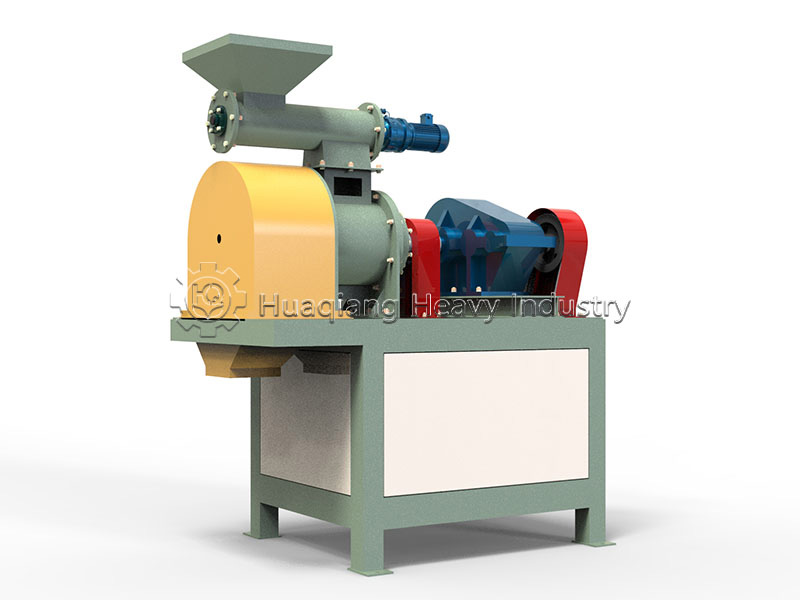

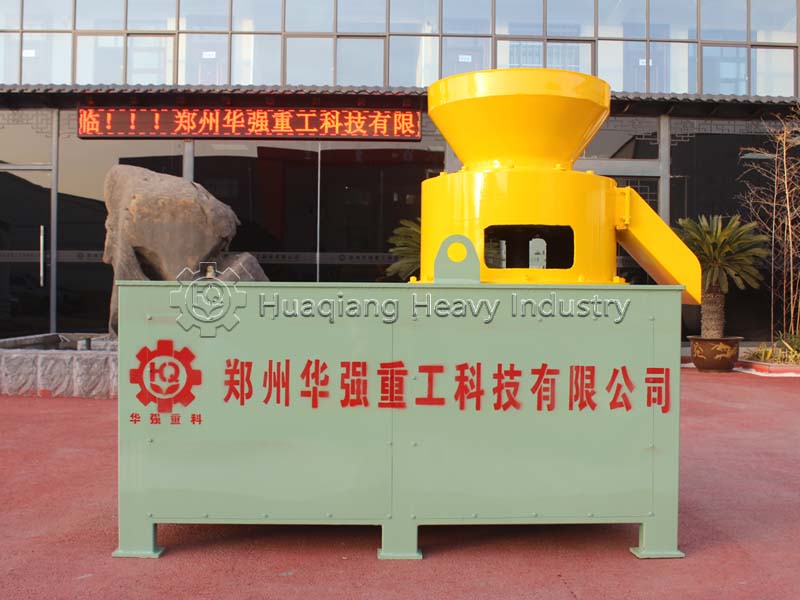


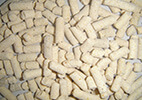

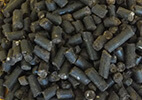
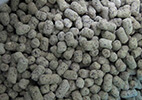
Ring Die Pelleting Machine
The ring die granulator is a widely used pelletizing machine. It utilizes a mechanical extrusion granulation process and holds a significant position in the pellet production market due to its high efficiency and stable performance. Its core operating principle is to feed pre-treated material between a ring die and a pressure roller. The pressure roller rotates under power, exerting a force on the material, forcing it through the die holes in the ring die to form columnar pellets. This is then cut into pellets of a predetermined length by a cutting device.
This granulation method eliminates the need for complex drying processes and effectively preserves the nutrients and active ingredients in the material while ensuring pellet quality. Compared to other granulation equipment, the ring die granulator offers high production efficiency, with a single machine output of several to tens of tons. The pellets produced are dense and strong, making them suitable for large-scale industrial production.
Where are ring die granulators commonly used?
Ring die granulator is widely used in many industries due to its excellent performance and wide adaptability. The specific application scenarios are as follows:
Fertilizer field
It can produce various organic fertilizers, inorganic compound fertilizers, bio-organic fertilizers, etc. It can ferment organic waste such as livestock and poultry manure and crop straw into granular fertilizers, solving the problems of inconvenient transportation and easy agglomeration of organic fertilizers.
It can also be used to produce special fertilizers such as slow-release fertilizers and controlled-release fertilizers. By adjusting the raw material formula and granulation process parameters, the precise release of fertilizer nutrients can be achieved to meet the nutrient needs of different crops at different growth stages.
Other industrial fields
Feed industry: It is a key equipment for producing pellet feed for livestock, poultry, aquatic products, etc. It can mix corn, soybean meal, bran and other raw materials according to the formula and then granulate them, thereby improving the digestibility and absorption rate of feed, reducing feed waste, and pellet feed is easy to store and transport.
Biomass energy industry: Biomass raw materials such as wood chips, straw, and rice husks can be made into high-density pellet fuel. This fuel has high combustion efficiency and low pollution, and can replace traditional coal in industrial boilers, home heating and other fields.
Chemical industry: Suitable for granulation of chemical raw materials such as catalysts, pigments, detergents, etc. Granulation can make these chemical products have better fluidity, stability and performance.
Forestry industry: Wood processing waste can be made into wood pellets for the production of artificial boards, activated carbon and other products, thus realizing the recycling of resources.
How is the ring die granulator designed according to the pelletizing process?
The structural design of the ring die granulator is closely integrated with the pelletizing process. Each component works together to achieve efficient pelletizing. Its main components and functions are as follows:
Feeding device
It consists of a hopper, a screw conveyor and a conditioner. The hopper is used to temporarily store the material to be granulated. Its capacity depends on the production scale and is generally 1-10 cubic meters.
Ring die
It is the core component of the ring die granulator. It is forged with high-strength alloy steel. After heat treatment, the surface hardness can reach HRC55-65, and it has extremely high wear resistance and pressure resistance.
pressure roller
There are usually 2-3 rollers evenly distributed inside the ring die, made of wear-resistant cast iron or alloy steel. The surface of the roller is usually processed with special patterns or grooves to increase friction with the material, prevent the material from slipping, and ensure that the material can be smoothly brought into the space between the ring die and the roller for extrusion.
Cutting device
It consists of blades and a drive mechanism and is installed on the outside of the ring die. The blades are made of high-speed steel or alloy tool steel, which is sharp and wear-resistant.
Drivetrain
It consists of a motor, a reducer, a coupling, etc. The motor provides power, and the power depends on the equipment model and production capacity, generally 15-160kW.
How does the ring die granulator make fertilizer?
The process of making fertilizers with ring die granulator is rigorous and orderly. Each link has an important impact on the quality of the final product. The specific steps are as follows:
Raw material pretreatment
For organic fertilizer raw materials, they must first be fermented and decomposed. The fermented materials are crushed and sieved to make the particle size reach 60-100 mesh to ensure the granulation effect.
Quenching and tempering treatment
The pretreated material enters the conditioner, where an appropriate amount of steam (or water or binder) is introduced according to the material characteristics to raise the material temperature to 60-80°C and adjust the moisture content to 12%-18%. The conditioning makes the material soft and sticky, making it easier to extrusion and granulation.
Extrusion granulation
The quenched and tempered material enters between the ring die and the pressure roller. The pressure roller rotates under the drive of the transmission system, exerting a strong extrusion force (generally 20-50MPa) on the material, so that the material overcomes the resistance of the ring die hole and is squeezed into columnar particles and squeezed out of the die hole.
Cutting and cooling
The cylindrical particles extruded from the die hole are cut into particles of a set length (usually 2-10 mm) by the cutting device outside the ring die.
Screening and packaging
The cooled particles are screened by screening equipment to separate unqualified particles (too large, too small or broken particles), and the unqualified particles are returned for re-granulation.Qualified granular fertilizers are packaged after being measured. The packaging materials can be woven bags, plastic bags, etc., which are convenient for storage and transportation.
| Model | HP-450 | HP-650 |
| Capacity (t/h) | 2-5 | 4-8 |
| Pelleting Rate (%) | >95% | >95% |
| Motor Power(Kw) | 30+1.5 | 55+3 |
| Dimension(mm) | 2150*1350*2200 | 2500*1350*2535 |